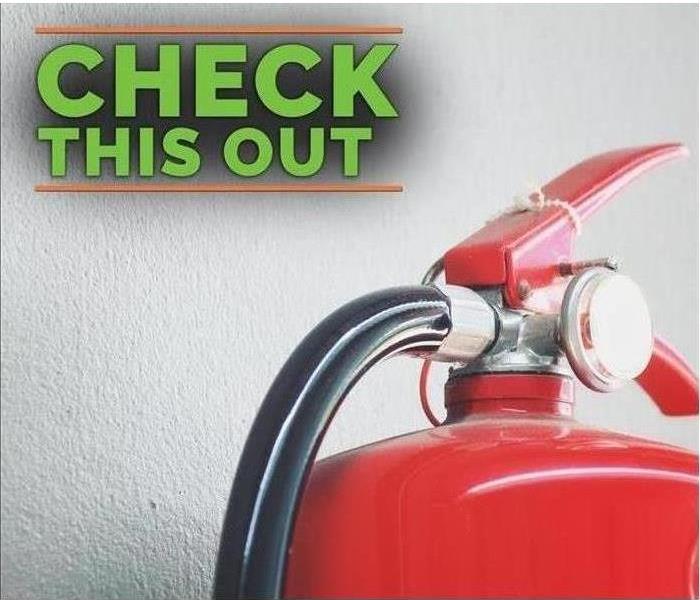Using A Fire Extinguisher 101...
1/24/2022 (Permalink)
Hopefully, we all have easy access to a fire extinguisher in our home or place of business. The question is, do you know how to use one and on what types of fires?
A fire-extinguisher can certainly be very helpful in preventing fire and smoke damage from spreading throughout your home or office in the City and County of Wellington. If the worst happens, remember that SERVPRO of Guelph has caring experts to help you in cleaning up damage left from a fire.
If you have any doubts or concerns at all, leave the premises and call 911 once you are outside.
SERVPRO of Guelph wants you to know that you can try to fight a small fire only if and only if:
- You have the right class of fire extinguisher
- You know how to use the fire extinguisher
- You can get to the fire extinguisher quickly. Fire is fast. Fire damage and smoke damage are less painful than injuries to you or others.
Types of Portable Fire Extinguishers
- Class A fire extinguishers should be used to put out fires involving cardboard, paper, wood, dried vegetation.
- Class B fire extinguishers should be used to put out fires involving flammable and combustible liquids, such as gasoline, diesel, oil, and oil-based paints, and many solvents.
- Class C fire extinguishers are suitable for use to extinguish fires that involve appliances, tools, or other equipment that is plugged in or otherwise electrically energized, as well as for fires burning in close proximity to electrically-energized equipment.
- Class D fire extinguishers are designed for use to extinguish combustible metals, such as magnesium or sodium, and are often designed for the specific type of combustible metal. This does NOT include ordinary carbon steel, only metals that will burn when ignited.
- Class K fire extinguishers are designed to be used for putting out fires that involve oils and greases used for cooking in kitchens, such as vegetable and animal-based oils and fat.






 24/7 Emergency Service
24/7 Emergency Service
